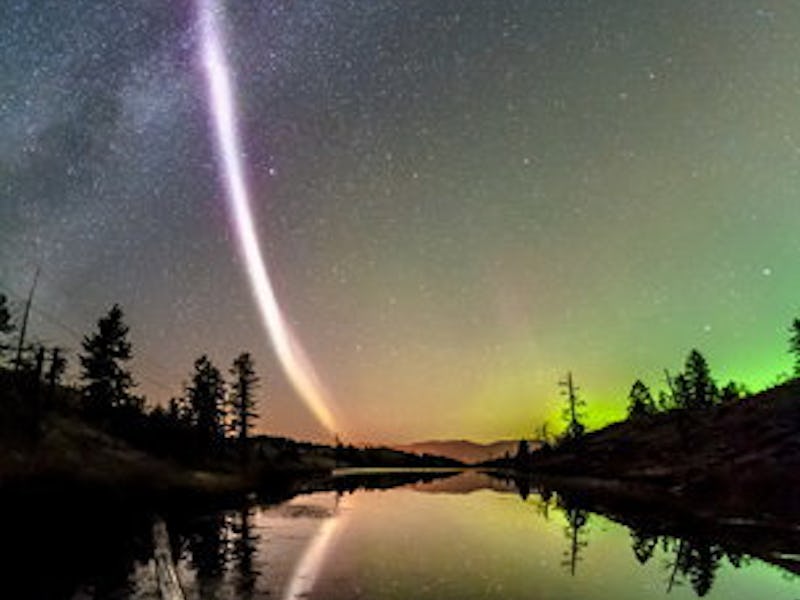Citizen Scientists and ESA Swarm Discover a New Aurora: Steve

A group of citizen scientists in Alberta, Canada have discovered a new aurora feature and named it … Steve. That’s right. Steve. Citizen science is emerging as an increasingly important force these days, and when everyday folks take on the task of scientific inquiry, we end up with some interesting results. This isn’t a bad thing by any means, just a bit unconventional. Besides, the offbeat name for this aurora feature fits right in with how these citizens brought their finding to light: Facebook.
You may be familiar with auroras, the dazzling displays of light that happen at Earth’s north and south poles as solar wind interacts with atmospheric particles. Even if you’ve never seen one in person, you may have a picture of one as your computer’s desktop background.
The Alberta Aurora Chasers are very familiar with auroras, and when they saw a streak across the sky, they knew they were seeing something unusual. There was no evidence of this phenomenon in the scientific literature, so the Aurora Chasers took it upon themselves to give it a name. And in the grand tradition of Boaty McBoatface and other ridiculous names for serious things, they named it Steve. Because of course they did.
But despite its silly name, Steve is super interesting. Unlike the typical auroras that appear as rippling curtains of light, Steve appears as an undulating streak of light across the night sky.
Scientists are still looking into what Steve is, but Calgary aurora researcher Eric Donovan is on the case. Matching a known sighting of Steve with the European Space Agency’s magnetic field swarm data at the same time as Steve was observed from Earth, Donovan was able to characterize this mysterious streak.
“The temperature 300 km above Earth’s surface jumped by 3000°C and the data revealed a 25 km-wide ribbon of gas flowing westwards at about 6 km/s compared to a speed of about 10 m/s either side of the ribbon,” Donovan tells the ESA. “It turns out that Steve is actually remarkably common, but we hadn’t noticed it before. It’s thanks to ground-based observations, satellites, today’s explosion of access to data and an army of citizen scientists joining forces to document it.”
Steve the aurora
So thanks to social media, advanced ESA satellite technology, and some creative citizen scientists, the world can now officially meet Steve.